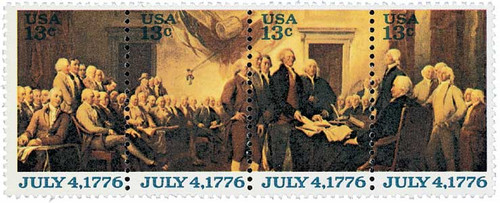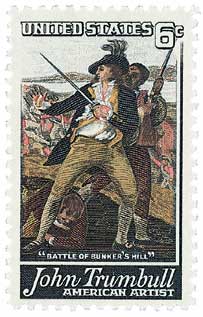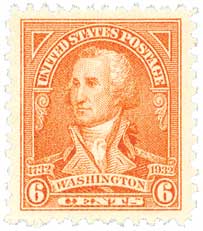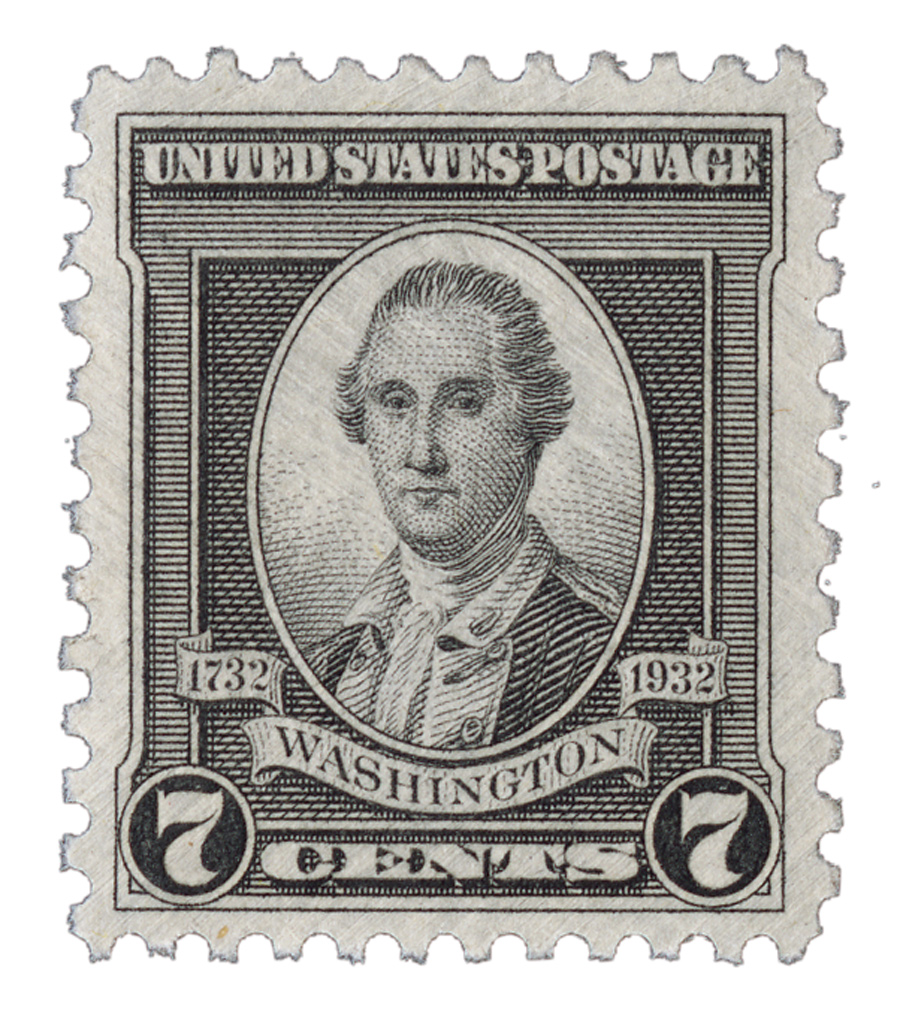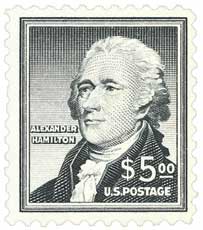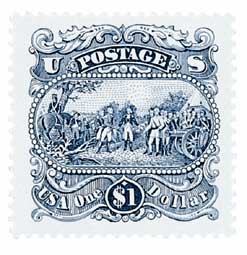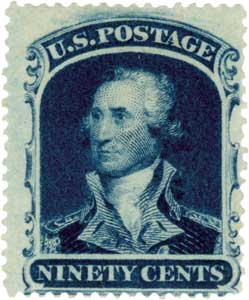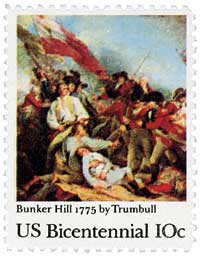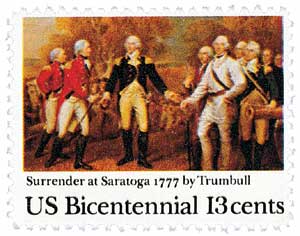
# 1691-94 - 1976 13c Declaration of Independence
Set of 4
Birth Of John Trumbull
Trumbull’s father was the governor of Connecticut and the family was descended from early Puritan settlers in the state. As a child, Trumbull suffered an accident that cost him the use of one eye. He went on to attend Harvard at the age of 15, graduating in 1773.
Like many patriots of his time, Trumbull joined the Continental Army at the outbreak of hostilities in the Revolutionary War. His drawing skills were particularly valued as he was able to provide sketches of the British works in Boston. He was present at the Battle of Bunker Hill and was later made a second personal aide to George Washington. Trumbull was then made deputy adjutant-general to Horatio Gates but resigned from the army in 1777 over a dispute over the date of his officer commission.
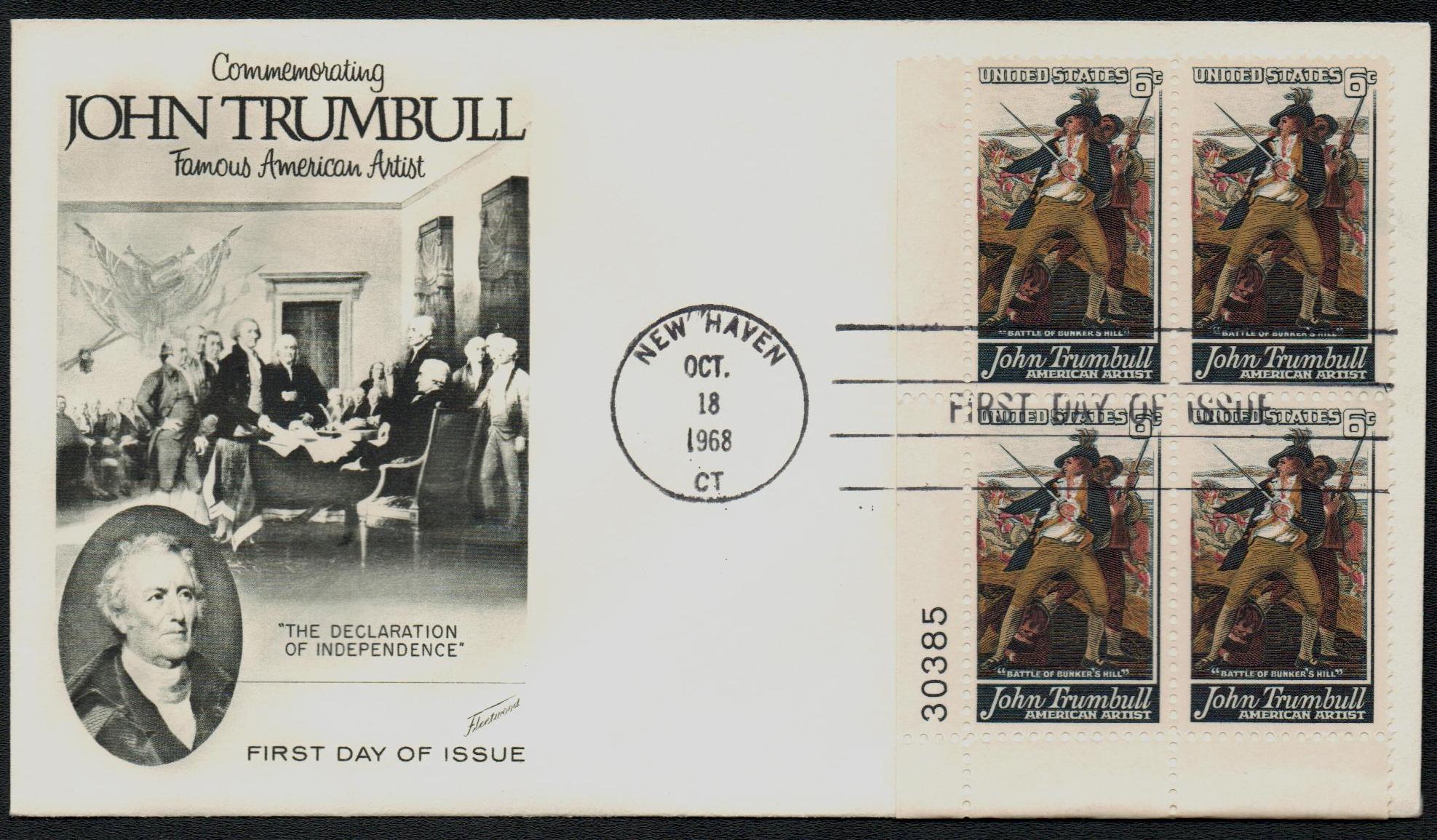
Trumbull then decided to pursue art as a profession. He went to London, where Benjamin Franklin introduced him to Benjamin West. Studying under West, Trumbull learned a great deal and was encouraged to paint small scenes of the war and miniature portraits.
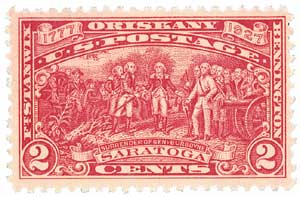
Then in 1780, a British commander was captured by Continental troops and hanged for being a spy. When word reached Great Britain, Trumbull, a former Continental Army officer, was arrested. He was imprisoned for seven months before being released. Trumbull then returned to America in 1782 and joined his brother in supplying the troops stationed in New Windsor, New York.
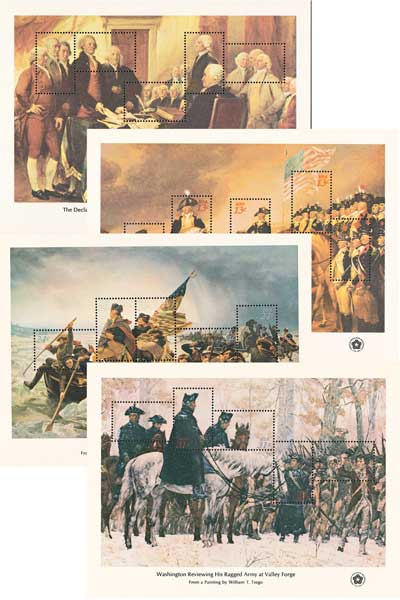
After the war ended, Trumbull returned to London to study with Benjamin West. While there, Trumbull painted Battle of Bunker Hill and Death of General Montgomery in the Attack on Quebec. A year later, in 1785, Trumbull went to Paris and sketched French officers for the Surrender of Lord Cornwallis. Also while there, he worked with Thomas Jefferson on drafting sketches for his Declaration of Independence. He would spend the next five years painting small portraits of the signers that he later pieced together to create the full painting. Whenever possible, he visited the men in person to paint their portraits and raise funds. Trumbull painted several other Revolutionary War scenes during this time, many of which the US Congress purchased and later hung in the rotunda of the US Capitol.
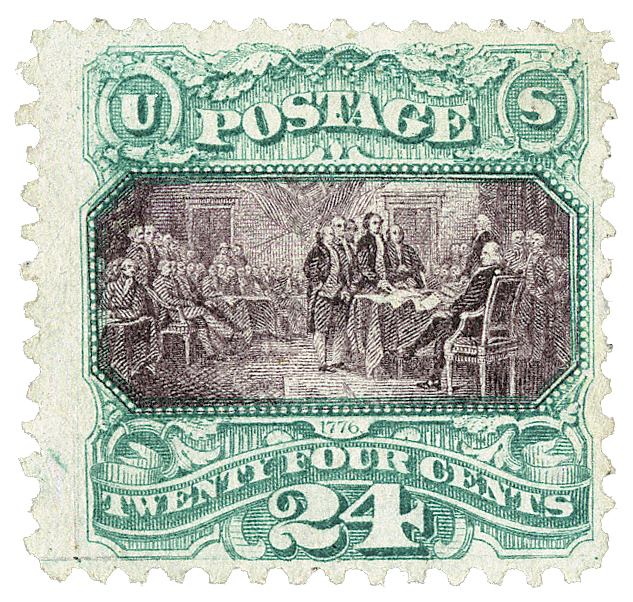
In 1794, Trumbull accompanied John Jay to London to negotiate a treaty with Great Britain to settle the boundary between the US and Canada. Two years later, he was part of the five-man commission to carry out the seventh article of the Jay Treaty, mediating claims from American and British merchants during the war.
In 1816, Trumbull was appointed the president of the American Academy of Fine Arts in New York City. He remained in that position for 20 years. For several years Trumbull had trouble selling his paintings individually. Then in 1831, he sold a series of 28 paintings and 60 miniature portraits to Yale University, which would become the largest single collection of his artwork. The sale granted him an annual $1,000 annuity.
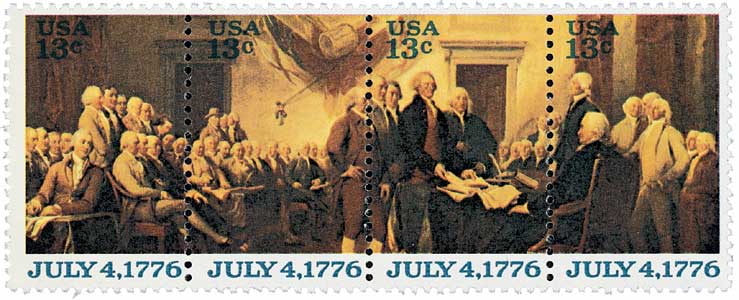
Trumbull’s painting skills declined in his later years and he turned to writing his biography, which he published in 1841. He died two years later on November 10, 1843.
Trumbull’s work has been the subject of several other stamps, including these:
Click here to view some of Trumbull’s paintings.
Set of 4
Birth Of John Trumbull
Trumbull’s father was the governor of Connecticut and the family was descended from early Puritan settlers in the state. As a child, Trumbull suffered an accident that cost him the use of one eye. He went on to attend Harvard at the age of 15, graduating in 1773.
Like many patriots of his time, Trumbull joined the Continental Army at the outbreak of hostilities in the Revolutionary War. His drawing skills were particularly valued as he was able to provide sketches of the British works in Boston. He was present at the Battle of Bunker Hill and was later made a second personal aide to George Washington. Trumbull was then made deputy adjutant-general to Horatio Gates but resigned from the army in 1777 over a dispute over the date of his officer commission.

Trumbull then decided to pursue art as a profession. He went to London, where Benjamin Franklin introduced him to Benjamin West. Studying under West, Trumbull learned a great deal and was encouraged to paint small scenes of the war and miniature portraits.

Then in 1780, a British commander was captured by Continental troops and hanged for being a spy. When word reached Great Britain, Trumbull, a former Continental Army officer, was arrested. He was imprisoned for seven months before being released. Trumbull then returned to America in 1782 and joined his brother in supplying the troops stationed in New Windsor, New York.

After the war ended, Trumbull returned to London to study with Benjamin West. While there, Trumbull painted Battle of Bunker Hill and Death of General Montgomery in the Attack on Quebec. A year later, in 1785, Trumbull went to Paris and sketched French officers for the Surrender of Lord Cornwallis. Also while there, he worked with Thomas Jefferson on drafting sketches for his Declaration of Independence. He would spend the next five years painting small portraits of the signers that he later pieced together to create the full painting. Whenever possible, he visited the men in person to paint their portraits and raise funds. Trumbull painted several other Revolutionary War scenes during this time, many of which the US Congress purchased and later hung in the rotunda of the US Capitol.

In 1794, Trumbull accompanied John Jay to London to negotiate a treaty with Great Britain to settle the boundary between the US and Canada. Two years later, he was part of the five-man commission to carry out the seventh article of the Jay Treaty, mediating claims from American and British merchants during the war.
In 1816, Trumbull was appointed the president of the American Academy of Fine Arts in New York City. He remained in that position for 20 years. For several years Trumbull had trouble selling his paintings individually. Then in 1831, he sold a series of 28 paintings and 60 miniature portraits to Yale University, which would become the largest single collection of his artwork. The sale granted him an annual $1,000 annuity.

Trumbull’s painting skills declined in his later years and he turned to writing his biography, which he published in 1841. He died two years later on November 10, 1843.
Trumbull’s work has been the subject of several other stamps, including these:
Click here to view some of Trumbull’s paintings.

